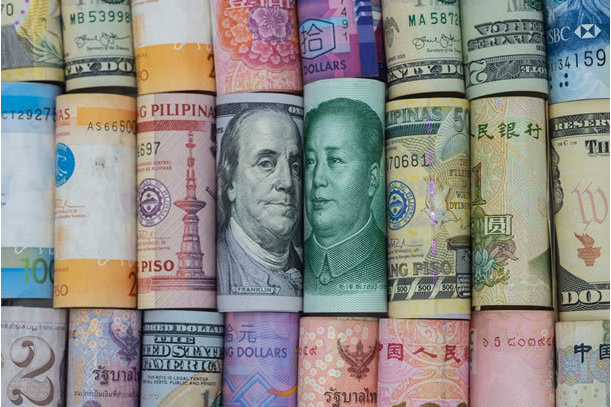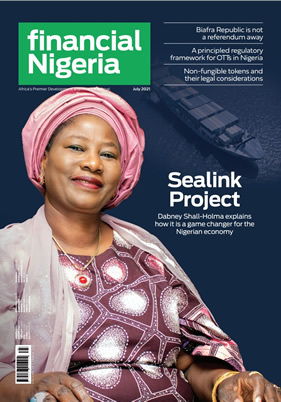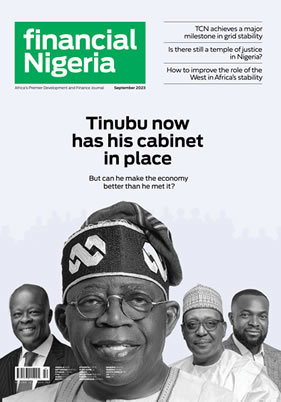Fifty years of floating currencies

Feature Highlight
Every exchange-rate regime involves a trade-off between stability and flexibility.
Summary: The half-century since the official demise of the Bretton Woods system of fixed exchange rates has shown the benefits of what replaced it. While some may feel nostalgic for the post-war monetary system, its collapse was inevitable, and what looked like failure has given rise to a remarkably resilient regime.
Fifty years ago last month, in March 1973, the Bretton Woods arrangement of fixed exchange rates was abandoned, and the world’s major currencies – including the US dollar, pound, yen, and Deutsche Mark – were allowed to float. At the time, the system’s demise was generally considered a policy failure. But the shift from fixed to flexible exchange rates was probably inevitable.
The international monetary system that was designed at Bretton Woods, New Hampshire, in 1944, helped lay the economic foundation for the post-war international order. Over the next three decades, known in France as the “glorious 30” (les trente glorieuses), the system delivered rapid economic growth and unprecedented prosperity. And yet the Bretton Woods regime operated as planned only for roughly one year.
Though it was born in 1944, the Bretton Woods system did not become fully functional until 1958, after Western European countries had grown strong enough to make their currencies convertible into dollars. It was the very next year, 1959, that total dollar liabilities to foreigners reached the value of gold reserves held by US monetary authorities. Yale economist Robert Triffin realised the tension inherent in the US dollar’s role as the world’s only de facto reserve currency. Growing international demand for dollars, he predicted, would force the US to run constant balance-of-payments deficits until investors inevitably lost confidence in the greenback, causing the system to break down. This insight later came to be known as “Triffin’s dilemma.”
As it turned out, the increase in dollar liabilities accelerated after 1965, owing to the inflationary US fiscal and monetary expansion of the Vietnam War era. The system became increasingly strained until, in 1971, US President Richard Nixon suspended other governments’ ability to convert their dollar holdings into gold. Two years later, the world’s major currencies became untethered for good. The new floating system demonstrated its worth later in 1973, when currency depreciations helped oil-importing countries like Japan withstand the shock of the Arab oil embargo.
The shift toward exchange-rate flexibility continued after 1973. Initially, most smaller currencies remained pegged to the dollar, but over the following decades, more and more emerging and developing economies moved away from exchange-rate targets and toward increased flexibility.
Every exchange-rate regime involves a trade-off between stability and flexibility. On one hand, fixed rates facilitate trade and investment by minimising exchange-rate risk and transaction costs, provide a nominal anchor for monetary policy, and offer protection against currency wars and speculative bubbles. On the other hand, floating exchange rates enable central banks to set monetary policies independently of other countries. They also allow governments to adjust to trade shocks, retain seigniorage, act as a lender of last resort to their domestic financial institutions, and avoid the speculative attacks that sometimes afflict countries with pegged exchange rates. There are many intermediate options between the two extremes of firm fixing and free floating, including target zones, currency baskets, crawling pegs, escape clauses, and systematic managed floats.
Over the past 50 years, many countries have decided that the benefits of floating exchange rates outweigh the advantages of fixed rates. True, in the 1980s, the trend toward flexibility was temporarily reversed when some countries, particularly in Latin America, returned to exchange-rate targets as a means of taming high inflation. But the trend resumed after 1994, when Mexico was forced to adopt a more flexible exchange rate, followed by Thailand, South Korea, Indonesia, Russia, Brazil, Argentina, Turkey, and others.
While most major currencies float relatively freely, periods of extreme exchange-rate swings have sometimes led to consequential government intervention. A prime example is the 1985 Plaza Accord, whereby France, West Germany, Japan, the United Kingdom, and the US cooperatively intervened in the foreign-exchange market to bring the soaring dollar back to earth. But interventions became less common after 1995.
Starting in 2003, fears of “unfair” currency manipulation began to spread. For the past two decades, US politicians have been concerned that China, for example, was undervaluing its currency by selling renminbi and buying dollars. In 2010 and 2011, Brazilian officials accused the US and Japan of deliberately manipulating their currencies and coined the phrase “currency war” as a colourful way of describing competitive depreciation.
But, among developed countries, the last major foreign-exchange intervention to lower a currency’s value was a joint G7 effort to help Japan cope with the effects of the Tōhoku earthquake and tsunami in 2011. In February 2013, the G7 finance ministers and central bank governors vowed to refrain from competitive devaluations, a little-known agreement which has held. Even China stopped resisting the appreciation of its currency back in 2014.
Lately, fears of a currency war have been replaced by anxiety over “reverse currency wars.” With many countries more concerned about fighting inflation than reining in trade deficits, governments are competing to raise interest rates, thereby appreciating their currencies rather than seeking to keep them undervalued. Some countries are unhappy that the dollar has strengthened by roughly 14% since March 2021.
There are some who remain nostalgic for the post-war monetary system or even yearn for the pre-World War I gold standard. But the sinking of Bretton Woods in 1973 was not the currency equivalent of the Titanic disaster. Rather, as the last half-century has shown, it marked the emergence of a new, better system, which has managed to remain afloat despite frequently rough economic seas.
Jeffrey Frankel, Professor of Capital Formation and Growth at Harvard University, previously served as a member of President Bill Clinton’s Council of Economic Advisers. He is a research associate at the US National Bureau of Economic Research. Copyright: Project Syndicate.
Other Features
-
Can you earn consistently on Pocket Option? Myths vs. Facts breakdown
We decided to dispel some myths, and look squarely at the facts, based on trading principles and realistic ...
-
How much is a $100 Steam Gift Card in naira today?
2026 Complete Guide to Steam Card Rates, Best Platforms, and How to Sell Safely in Nigeria.
-
Trade-barrier analytics and their impact on Nigeria’s supply ...
Nigeria’s consumer economy is structurally exposed to global supply chain shocks due to deep import dependence ...
-
A short note on assessing market-creating opportunities
We have researched and determined a practical set of factors that funders can analyse when assessing market-creating ...
-
Rethinking inequality: What if it’s a feature, not a bug?
When the higher levels of a hierarchy enable the flourishing of the lower levels, prosperity expands from the roots ...
-
Are we in a financial bubble?
There are at least four ways to determine when a bubble is building in financial markets.
-
Powering financial inclusion across Africa with real-time digital ...
Nigeria is a leader in real-time digital payments, not only in Africa but globally also.
-
Analysis of NERC draft Net Billing Regulations 2025
The draft regulation represents a significant step towards integrating renewable energy at the distribution level of ...
-
The need for safeguards in using chatbots in education and healthcare
Without deliberate efforts the generative AI race could destabilise the very sectors it seeks to transform.
Most Popular News
- NDIC pledges support towards financial system stability
- Artificial intelligence can help to reduce youth unemployment in Africa – ...
- ChatGPT is now the most-downloaded app – report
- Green economy to surpass $7 trillion in annual value by 2030 – WEF
- Global trade to hit record $35 trillion despite slowing momentum
- CBN licences 82 bureaux de change under revised guidelines












